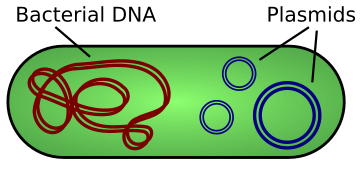Знаете ли вы?
Кликните два раза на слово, чтобы найти его в TermGallery.
Кликните два раза на слово, чтобы найти его в TermGallery.
Значения термина plasmid на английском
A small cellular inclusion consisting of a ring of DNA that is not in a chromosome but is capable of autonomous replication.
Использование термина plasmid на английском
1
An obvious size change was not observed when plasmid DNA was added.
2
Protection was not observed using a vaccine strain containing the empty plasmid.
3
This increased variance may be due to the differing plasmid population sizes.
4
This type of plasmid is widely distributed in pathogenic E. coli strains.
5
For each assay, a standard curve with a quantified plasmid was included.
6
The plasmid was accompanied by a transcription factor which would activate it.
7
The virulence of this pathogen is dependent on an acquired virulence plasmid.
8
The recombinant expression plasmid also augmented Rae-1 expression by liver cancer cells.
9
No association however could be made between a particular plasmid profile and antibiogram.
10
At least two different regions of the plasmid were concerned with transfer functions.
11
Rapid plasmid loss was observed under nonselective conditions using 3-chlorobenzoate as the substrate.
12
Analytical sensitivity was 10 copies of control plasmid DNA per reaction.
13
Furthermore, recent experiments have detected efficient trans cleavage of plasmid substrates in vivo.
14
This sensitivity is used to select for loss of the plasmid.
15
When carbon source levels were lower or not replenished, plasmid invasion was hampered.
16
Autonomously replicating plasmid pMF1 provides a new tool for genetic manipulation in Myxococcus.
Об этом термине
Частые словосочетания
Больше словосочетаний
Plasmid через время
Plasmid в диалектах

Соединенные Штаты Америки
Частое


